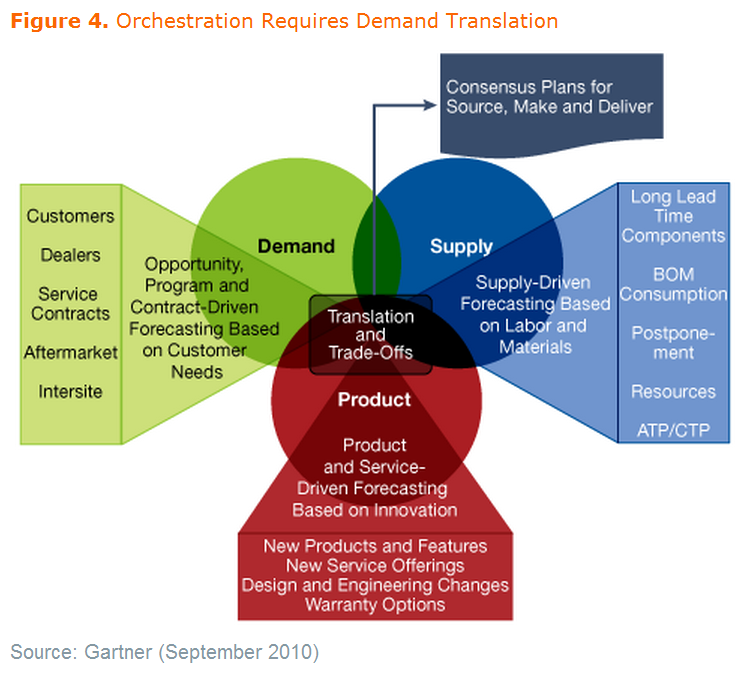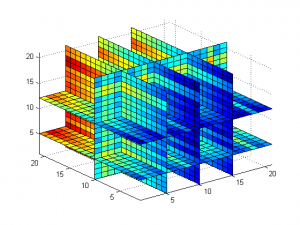An interesting set of articles came out over the past few weeks that look at the future direction of ERP and supply chain management. While these two solutions spaces are not the same, there is an overlap—in terms of functionality and also because the big ERP vendors such as SAP and Oracle have both developed supply chain management (SCM) solutions and have bought or partnered with other solution vendors in the SCM space. Let’s look at the view from the ERP perspective first. In an article in the Future-Tech section of Toolbox.com titled “Where will ERP be in 2 years?”, the author positions ERP in the following manner:
"ERP is used to track important data — usually related in some way to an organization’s financial performance —across the enterprise."
The important term is “track,” implying governance and control of financial information. Although ERP does more than this, the comment draws attention to transactional level activity—taking a sales order, processing payment, issuing a purchase order, etc.—and governance of financial transactions as the primary focus of ERP. Michael Krigsman, CEO of Asuret, commented in the article that:
“Simplified ERP implementations are going to become an essential factor because the market is becoming less tolerant of these big, expensive, monolithic implementations of traditional ERP.”
I’m waiting with bated breath, because where governance and control are concerned, I cannot see the CIO or regulatory bodies reducing their need for risk avoidance. Where things begin to get more interesting is when Krigsman comments that:
“Cloud-based ERP services will also evolve in the future to become more integrated both with other clouds and with installed ERP systems. Krigsman expects to see more vendors that offer pieces of ERP, which will necessarily lead to cloud-to-cloud integrations. This will allow customers to weave together their own highly tailored system from different vendors that best suits their organization and business processes. This type of interoperability between cloud services will also eliminate the need for companies to install middleware and execute complicated programming to make third-party modules work with an existing ERP system.”
In other words, the days of monolithic “we do everything” ERP systems may be coming to an end with innovation in delivery and interoperability, and each supplied by cloud services, typically outside of the ERP vendors.
Separating Transactions from Decision Support
Where this has a direct impact on supply chain management is in Krigman’s comment that:
“…predictive analytics, such as recommendation engines, will also be important to the future of ERP, enabled by faster analytics.”
The very heart of any SCM organization, and its associated solutions, is the prediction of future operational and financial performance by linking demand anticipation (forecast) and satisfaction (actual orders) to the supply of materials to satisfy the orders. This, in turn, requires the anticipation and provisioning of resources to convert raw materials into finished goods through complex and multi-tier, multi-continent manufacturing processes using bills-of-material (BOM), bills-of-distribution, and routings. Naturally, there is also the conversion of independent demand (sales orders and forecast) into dependent demands, which drive the purchase of raw materials through purchase orders and other procurement mechanisms using the BOMs, routings, and associated lead times and sourcing rules. In other words, SCM has been doing “predictive analytics” for years. What has changed over the past 2-3 years is the increased importance of what Gartner calls “demand translation.” This is the realization that a plan is never 100% correct, and therefore early detection of the difference between actual demand and anticipated demand through constant monitoring, and profitable response, are of equal importance to the creation of the original plan.
It is the enhancement of these analytics that will bring benefit to an organization. Without a doubt, there is some benefit to be gained from analyzing what has happened, but it is the prediction of what will happen, along with the identification of risks and opportunities, that will enable a company to increase market share during growth periods and maintain market share during downturns.
Decisions Are Multi-Dimensional
In an article titled “Deciphering supply chain management software” in SearchManufacturingERP.com, Beth Stackpole explores the idea that:
“SCM software has evolved to provide rich functionality in the areas of planning, analytics, and real-time visibility. At the same time, new cloud-based deployment models and consolidation among SCM vendors have transformed what was once an arcane and often disconnected set of applications and processes into a tightly integrated, more cohesive suite of tools.”
Clearly this is related to the comments made by Michael Krigsman to which I refer early in this blog. But what I find fascinating is that while Krigsman is predicting the dis-integration of ERP systems, Stackpole is predicting quite the opposite for SCM solutions. But I disagree with the idea that a “suite” is ever tightly integrated. At the heart of Krigman’s comments is the fact that little has been gained by tightly integrated ERP suites. Perhaps more correctly, his position is that a lot can be gained by uncoupling the decision support and predictive aspects of operations from the transactional aspects typical of an ERP system. What is missing from both discussions is that decision-making is not one-dimensional. What I mean by that is that nearly every system – whether ERP or SCM – with which I have worked has produced a SINGLE plan,
whereas making decisions is all about “what-if”; testing alternative hypotheses about market conditions (and thus, understanding the range of a plan). What I like about Stackpole’s vision is the value that can be obtained by being able to perform this necessary “what-if” analysis across functions. But the legacy idea that simply integrating disparate functional solutions with very different data models, analytics, and user experiences is going to solve the inherent issues in current SCM suites is not correct. Balancing demand and supply of anything is everything, and this cannot be achieved quickly and effectively with a suite of integrated–whether tightly or not–functional solutions. Key capabilities that are missing include the ability to:
- Determine immediately the impact of a decision made by one function on the operational and financial performance of another function
- Identify and alert the people affected by the impact
- Bring people together, across functions, even organizations, to collaborate on scenarios to resolve an issue
- Do this in a matter of minutes, not hours and days
Bringing it Together
I agree with Krigsman that the days of monolithic ERP systems are numbered, even as the ERP vendors attempt “edge innovation,” and with Stackpole that SCM solutions need to be tightly coupled. The SCM processes can still be loosely coupled, but there must be the ability to bring different functions together to develop plans that balance competing operational and financial metrics through exploration of multiple scenarios. But we’re not going to get there with systems that are tightly integrated, rather than tightly coupled. As always–I welcome comment–especially dissenting comment, because we all learn from it.






Discussions
Good article and agree that days of monolithic ERP systems are numbered, This has been in discussion for the last 3 years and is currently labelled as "Surround strategies" where specialist providers enhance the core ERP (if ERP still exists) or working together to eliminate the need for ERP. Providers such as Invapay have been successfully removing Purchase and Pay from ERP platforms for global organisations.
In other words, the days of monolithic “we do everything” ERP systems may be coming to an end with innovation in delivery and interoperability, and each supplied by cloud services, typically outside of the ERP vendors.
---
In IT, it's seldom the case that things come to an end. More often, they simply get wedged to the side by something newer and, generally, better. But the old stuff sticks around for a long long time. Especially in software. The reason for this, especially with ERP systems is that it's probably the most mission critical software product in most businesses. The accounting doesn't work if the ERP has issues but, more importantly, operations don't work if the ERP is broken. So, replacing it is very difficult to do. Hence a long long life AND a motivation to attach new things to it rather than replace it.
I like the article a lot. Especially for a transaction-heavy business that operates largely through networked 3rd parties. But for a business that's internally complex operationally, a high-end ERP is likely to be a good fit for a long time.
Paul
http://gbeaubouef.wordpress.com/2012/06/17/is-cloud-death-for-erp/
Leave a Reply